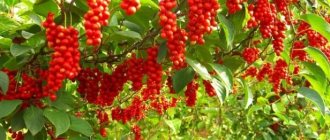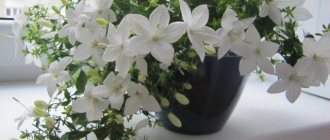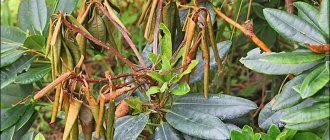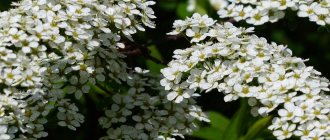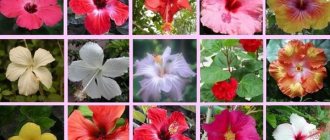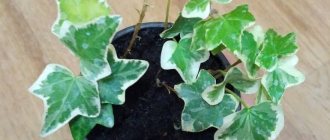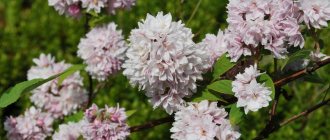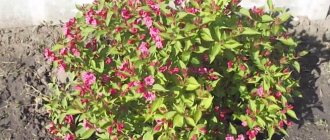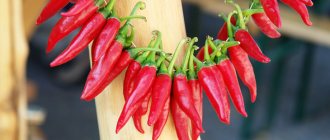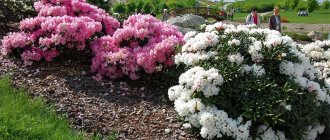Kinds
Rhododendron is a flowering plant from the Ericaceae family. The name translated from Latin means rose tree. Rhododendrons also include indoor azaleas. Although in fact, Azalea is a type of rhododendron. From a distance, the flowers of this plant resemble large roses.
There are about 600 species of rhododendrons. It is an evergreen or deciduous (semi-deciduous) shrub or tree. The plant can be tall, low, with erect stems or ampelous shoots.
This plant has large, bright flowers, collected in lush inflorescences of 3-20 pieces each. The petals are colored purple, orange, red, pinkish, and white. Rhododendron growing in the garden blooms in the spring and blooms for 2-4 weeks. During flowering, the plant emits a delicate aroma, although the tree itself is poisonous. It is long-lived and can grow up to 50 years.
Big
Evergreen trees. They can grow up to 10 meters in height. The leaves are thin, oblong, dark green, shiny. The length of the leaf is 30 centimeters. The flowers are large, pink or snow-white, bell-shaped, collected in inflorescences of 12-29 pieces.
Griffitsa
An evergreen shrub with straight branches, growing up to 1.4-3.5 meters. It has oblong, dull green above and yellow-green below, bare leaves (up to 30 centimeters long). White or slightly pinkish flowers are collected in huge loose inflorescences (each with 3-9 flowers). The plant tolerates cool winters of southern latitudes well.
Gukkera
The plant is named after the English botanist Hooker, who first described rhododendrons in detail. This is an evergreen shrub (up to 2.9 meters in height), with oblong leaves and large poisonous pink flowers. The flowers have the shape of bells, they are collected in inflorescences of 4-6 pieces each.
Decorative
Tall, evergreen shrub. It has oblong, dark green, smooth leaves up to 22 centimeters long. Loose and lush inflorescences consist of 8-10 snow-white or pinkish flowers. Flowering - from spring to mid-summer.
Pointed
Huge shrubs growing up to 2.9 meters in height. Young stems are pubescent. This plant has small (up to 6 centimeters) greenish leaves with a sharp tip. The flowers are large, snow-white, with five petals.
Indian
Lush shrub growing up to 2 meters in height. The leaves are oblong, shiny, green. They reach a length of 4 centimeters. The flowers are huge and look like lilies. The color of the petals is soft lilac or pastel red.
Katevbeysky
This rhododendron is also called Katevbinsky. This is an evergreen, voluminous-looking shrub. The crown is wide, resembling a huge ellipse. It blooms for almost a whole month (May-June). The flowers are pale lilac or red-violet, collected in inflorescences of 14-20 pieces each. Winter-hardy and shade-tolerant plant.
Beautiful
Evergreen three-meter shrub. The leaves are medium-sized, green, shiny, oblong, with a pointed tip. The flowers are collected in lush inflorescences, soft pink or white, with specks on one of the petals. They look like orchids.
Cigliform
A tall shrub that sheds its leaves. Blooms in early summer. The leaves are small (8 centimeters long), greenish, oblong, similar to cherry leaves. The flowers are coral or orange in color, with wavy edges, collected in inflorescences.
Pontic
Evergreen three-meter shrub. The leaves are elongated, with a sharp tip, dark green, smooth. The flowers are collected in lush spherical inflorescences. May be lilac or pale pink. They emit a pleasant aroma.
Simsa
Tall shrubs that do not shed leaves. The leaves are smooth, shiny, greenish, oblong, with a pointed tip. The flowers are large, lily-like. The petals can have a coral, pinkish, lilac, or red color. Flowers can be simple or double.
Blunt
Meter or two meter bushes with evergreen foliage. The plant has green, oblong, pointed upward leaves. Flowers are collected in lush inflorescences. The petals can be soft purple or deep pink.
Japanese
Deciduous shrub. The crown is highly branched and wide. The shrub can grow up to 2 meters in length. The leaves are oblong, thin, green in summer, and glow with orange-purple colors in autumn. The flowers are bell-shaped, large (8 centimeters in diameter), orange-red, collected in inflorescences of 6-12 pieces. Flowers appear with the first leaves blooming. The bush blooms for about one month. From a distance, a flowering bush resembles a blazing fire.
Varieties for home cultivation
Dwarf, compact shrubs, 15-40 centimeters tall, are grown in the apartment. There are standard azaleas on sale. They have a long straight leg and a lush, green crown strewn with bright flowers. Buy indoor dwarf rhododendrons during the flowering period (from December to April). Azaleas are given as gifts for Christmas, birthdays or Easter.
Snowflake
Azalea with delicate snow-white (pink in the middle) large flowers collected in lush inflorescences. The bush is low, with a spreading crown. The leaves are small, oblong.
Albert-Elizabeth
A plant with large double flowers. The flowers are soft pink or snow-white, with a bright border along the edges of the petals. They look like carnations. Flowering is abundant, from December to April.
Celestina
A late-blooming azalea with lush inflorescences of coral-colored flowers and small oblong leaves. The top of the bush is abundantly covered with flowers, due to which the leaves are almost invisible.
See also
Medicinal properties and contraindications of periwinkle, use and benefits of the flowerRead
Starfish
Compact bush with small dark green leaves. The flowers are white, with crimson specks on one of the petals.
Melina
Dwarf low-growing shrub. The flowers are crimson in color, collected in lush inflorescences.
Madame Joly
A low, compact bush with flowers resembling lilies, collected in inflorescences. The color of the flowers is soft pink.
Czardas
The bush blooms in April. It has a creamy color, double, fragrant flowers.
Satan
Tall spreading shrub. Blooms profusely. The flowers are fiery red, with wavy edges of the petals.
Warbler
A low bush with a lush crown. The flowers are snow-white, collected in inflorescences.
Golden lights
Medium height bush. Blooms profusely with golden yellow flowers.
Azure
Strongly branched and low-growing bush. The flowers are purple, collected in lush inflorescences.
Koichiro Wada
Low, abundantly flowering bush. The flowers are snow-white, with crimson specks on one of the petals. They look like orchids.
Description of rhododendron
Indoor rhododendron is a lush shrub with strong woody trunks, leathery dark green leaves and profuse flowers.
Where is the best place to put a rhododendron in an apartment?
The shades of the opened buds vary from white to dark red. The most common hybrid varieties of rhododendron grown at home:
- Adventsglocken;
- Albert Elizabeth;
- Kontsinna.
These varieties are most adapted to growing indoors, although they will require some effort to preserve the plant. Even novice gardeners can propagate them.
For your information! In nature, rhododendron grows successfully in northern cool regions, for example, Scotland, Japan, and China. Moreover, shrubs grow on mountain slopes without access to nutritious soil. Therefore, when a plant appears at home, it is difficult for it to adapt to an environment reminiscent of a greenhouse.
Features of growing in an apartment
Small dwarf bushes are kept in the house. This is a luxurious plant that delights with lush fresh flowers during the cold winter season or early spring. Azaleas flowers come in various shades, simple and double, fringed and corrugated.
In eastern countries, a bonsai is formed from a small flowering bush. Azaleas are often given as gifts when they bloom. When purchasing, pay attention to unopened buds.
Once in a warm apartment, very soon this plant crumbles. Indoor conditions are not suitable for azaleas. After all, from November to March they prefer low temperatures (8-11 degrees Celsius) and high humidity. In a dry and hot room, azaleas quickly die. True, in greenhouses or in conditions suitable for them they can live for a long time and bloom the next season.
The plant blooms from December to April. Prefers bright but diffused light. In summer and spring, the air temperature should be 15-18 degrees. During the autumn-winter dormant period, the temperature is lowered and watering is reduced. Azaleas are watered regularly. Make sure the soil is constantly moist.
During flowering, azalea needs abundant watering. It is advisable to spray the plant once a day; in hot weather this procedure is carried out three times. Growing and caring for azaleas is not difficult. The main thing is to ensure normal temperature conditions and regular watering.
Landing location in the apartment
Azalea looks great in a single exposure. In the apartment it can be placed near other indoor ornamental plants. Azalea prefers not too high temperatures and high humidity. Under no circumstances should a pot with an azalea be placed on a windowsill, near a radiator.
Lighting
It is advisable to place the azalea pot away from direct sunlight. The plant grows well in partial shade. Azalea requires diffused bright light.
Temperature
From late autumn to early spring, it is advisable to provide the plant with a temperature of 9-11 degrees Celsius. In summer, the azalea can be taken out into the garden or onto the terrace. True, rhododendron should always be in partial shade.
Humidity
This is a moisture-loving plant. The soil in the pot should be constantly moist. The azalea is regularly watered and the leaves are irrigated with water.
Caring for rhododendron at home
Lighting
The rhododendron indoor plant needs a lot of bright light for a long time. It is best to place the rhododendron pot on the south side, but not in direct sunlight. During the warm summer period, the flower can be taken outside, protected from direct sunlight and precipitation.
Temperature
The optimal summer temperature for rhododendron in room conditions is 16-18 °C, but if you provide the plant with proper watering and air humidity, the temperature can be around 22 °C. Starting from October, the temperature must be reduced to 5-8 °C above zero. This temperature should last at least a month and a half, since it is at this temperature that flower buds ripen. When the buds begin to swell, the temperature begins to gradually increase to 13-15 °C. And when the buds begin to open - up to 18 °C. Home rhododendron does not tolerate drafts, but it is necessary to provide it with a flow of fresh air.
Watering rhododendron
Rhododendron at home in the summer, when the temperature is high and the soil dries out quickly, must be watered immediately after the top layer of soil has dried. Water with warm, settled water. You can water either by overhead watering or by watering through a tray, and it is best to alternate. The water from the pan should be poured out 30-40 minutes after watering. Sometimes you can use the watering method by immersing the rhododendron pot in a container of water for 5 minutes, then allowing the excess water to drain for an hour. If the air temperature is not very high and the soil takes several days to dry, then the indoor rhododendron is watered a couple of days after the substrate has dried on top. In winter, water carefully, usually through a tray. If the soil does not have time to dry out, the roots may begin to rot. Before watering, water must be allowed to settle for 24 hours.
- Hatiora: care, reproduction, types
Spraying
The rhododendron flower does not tolerate dry air, so it needs constant spraying at least once a day. If the temperature is very high, then you can spray even 2-3 times a day. Before spraying, the water should be allowed to settle so that the lime settles and the chlorine evaporates. Placing rhododendron near heating devices will have a very negative impact on the development of the plant, so flowers should grow away from radiators and heaters.
Top dressing
The indoor rhododendron flower must be fed with complex mineral fertilizers every three weeks during spring and summer. During the period of bud formation, for more abundant flowering, rhododendron is fed twice with phosphorus fertilizers.
Bloom
The rhododendron plant blooms for one to one and a half months. If the plant is properly cared for, it will bloom starting in December (different species may differ in flowering times). Some varieties bloom starting in March, and the latest ones - from May. If you buy rhododendron, it is better to take specimens with a couple of flowers and a large number of unopened buds. Another feature of rhododendron is that it is not afraid of movement during flowering.
Trimming
Homemade rhododendron can bloom for several years in a row, but this requires proper pruning. Faded shoots must be pruned. This is done after transplanting the plant. It is necessary to pinch the tops of young branches, leaving up to 6 leaves on them, and remove weak shoots completely. The first pinching of rhododendron is done approximately a month and a half after the end of flowering. Throughout the year, the plant can be pinched several more times, but the last time no later than mid-summer.
Transplanting rhododendron
Rhododendron will only grow well in acidic soil, so either purchase ready-made rhododendron (Azalea) soil or test the acidity using litmus paper - the pH should be between 4 and 4.5. The soil can be made up of one part peat and two parts coniferous soil, you can add a little river sand. Expanded clay should be poured onto the bottom of the pot for good drainage. Young rhododendrons are replanted every year, and older ones - after one or two years. If the roots have grown very large, it is advisable to trim them slightly. The pot for transplanting should not be very deep.
Propagation by cuttings
Pruning for cuttings is carried out from March 15 to April 15 or from July 15 to August 15. Cuttings need to be cut off those that were last pinched last year. I take cuttings up to 10 cm long, cut the leaves in half, and cut off the bottom couple completely, making a cut under the bud at an angle. The cuttings are placed in a solution of a root formation stimulator for several hours. The substrate is made up of equal parts of coniferous soil and peat, or planted in clean peat. Expanded clay is poured onto the bottom of the bowl, a thin layer of sand on top, and then a substrate. The cuttings are planted at a distance of 4 cm from each other and covered with glass. The temperature is maintained at 25 °C, the cuttings are regularly ventilated and sprayed. When the rhododendron cuttings take root, the glass should be removed and the soil should be kept moderately moist at all times. The first rhododendron transplant is done when the young plants grow 3-4 cm, transplanted into coniferous soil at a distance of 10 cm from each other. 3 months after this, it is necessary to pinch the plants to improve branching and bush formation. The first buds must be removed so that the plant spends energy on development rather than flowering. At the beginning of spring, pinch them a second time and transplant them into individual pots. A fully formed rhododendron will grow in 2-3 years.
Virulence
All parts of the rhododendron are highly poisonous. After working with the plant, you need to wash your hands. Make sure that children do not eat flowers and leaves - severe poisoning is possible.
How to choose soil
For rhododendrons, it is best to buy a ready-made substrate: for azaleas or heathers.
The soil mixture must be slightly acidic and must contain coniferous soil, peat, sand, and nutritional supplements.
- Option one. It is better for beginning gardeners to buy ready-made soil mixture. The soil for azaleas should contain peat, sand, drainage, mineral additives, vermicompost, coniferous and leaf soil.
- Option two. If you wish, you can prepare the soil mixture yourself. It should contain equal parts of heather, leaf soil, sand, high peat, and crushed pine bark. The soil is fertilized with mineral and organic additives. Usually take 5 grams of fertilizer per liter of water.
- Option three. Coniferous soil, leaf soil, sand, and peat are taken in equal proportions. Coconut flakes or crushed pine sawdust are added to loosen. The soil for azaleas must be disinfected and calcined at high temperatures.
How and when to plant rhododendron
Having chosen a place for planting, you can begin planting the rhododendron seedling. Since the plants are sold with a closed root system, they can be planted at any time of the year, except for the flowering period. However, it is preferable to do this in spring or autumn.
The process of planting a seedling can be divided into separate steps:
- Digging a planting hole. Its dimensions should be about 50 liters. This will allow you to replace the natural soil with one more suitable for the plant.
- A drainage made of broken brick or slate is laid at the bottom of the pit.
- The hole is filled one third with prepared soil, pouring it in a mound in the center. It is optimal to use a mixture of peat, light soil, leaf humus, pine needles and manure.
- Place the seedling vertically on the resulting elevation, spreading the roots freely in different directions.
- Gradually fill the hole with the prepared nutrient mixture, slightly compacting it.
- Water the seedling generously with 5-10 liters of water.
Be sure to mulch the soil around the plant with natural material: pine needles, high peat, bark. This will prevent the rhododendron roots from drying out.
Care
Azalea is a demanding plant. It needs to be looked after regularly. Azalea loves fresh air. It is advisable to constantly ventilate the room in which it is located.
Watering
During the flowering period, azaleas are watered daily. Pour a little soft water into the pot and make sure the soil is well moistened. Once a week, an indoor azalea can be placed in a large bucket filled with warm water for a couple of hours. The plant will bloom the next year if you water the soil regularly after flowering.
The soil in the pot should never dry out. Irrigation liquid should not contain chlorine and lime. It is advisable to use rainwater. You can add a little complex fertilizer, citric acid (2 grams per liter) or a tea bag to the liquid.
Top dressing
The soil mixtures in which azaleas grow are poor in nutrients. In winter, plants are not fed. In the spring, when the branches begin to grow, complex and nitrogen-containing additives are added once a week.
Fertilizers should not contain chlorine salts. In summer, at the time of flower bud formation, azaleas need more phosphorus and potassium. It is better not to feed the plant with nitrogen substances at this time.
For fertilizing, use store-bought fertilizers for azaleas or ammonium nitrate, superphosphate, and potassium sulfite. Take 2 grams of fertilizer per liter of water.
Mulching
The soil in the pot will not dry out if you sprinkle a little mulch on top. The surface is mulched with pine needles or peat mixed with sawdust.
Spraying
Azaleas suffer greatly from drought. In summer it can be sprayed several times a day. Cooled water is used to irrigate the leaves on both sides. In winter, azalea can be sprayed once a day.
Trimming
Azalea branches must be trimmed. This procedure stimulates the appearance of young branches on which new buds appear. Pruning is carried out in the spring, after flowering. You need to cut off the elongated shoots. It is important to thin out the bush. It is imperative to remove weak and diseased branches. The azalea will bloom profusely if the bush is not too lush.
Transfer
Once a year, the growing azalea is carefully transplanted into a large container. An adult plant is placed in another pot every 3-4 years.
Time and reasons
Azaleas are replanted immediately after flowering (closer to summer). The soil is replaced with a new, more nutritious one. The plant is transplanted into a larger pot so that the roots can develop freely, do not get tangled, and breathe well.
Choosing a pot
The new pot should be 5 centimeters in diameter larger than the old one. The previous container should fit freely into the new one. The pot should have a drainage hole at the bottom.
Soil composition
To transplant azaleas, it is advisable to buy ready-made soil mixture. You cannot use garden soil, as it may not be suitable in composition and may be contaminated with various infections. Azaleas like slightly acidic soil. The soil should be light, loose, and permeable.
See also
Causes and signs of petunia diseases, how to fight and what to do for treatmentRead
Components of the soil mixture for azaleas:
- coniferous land;
- peat;
- sand;
- leaf humus;
- pine bark;
- heather land.
All components are taken in equal proportions. The ingredients must be finely chopped. It is convenient to use expanded clay as drainage for azaleas. The soil is fertilized with minerals and vermicompost.
Common mistakes of a beginning gardener
Azalea is quite capricious and most often reacts to errors in care by the absence or short duration of flowering, and deformation of the buds. But other alarming symptoms may also arise. Therefore, you need to learn how to correctly interpret the signals given by the plant.
Table: how azalea reacts to errors in care (why the plant can dry out, shed leaves, look lethargic)
| What does the plant look like? | What is the reason? |
| The leaves droop, lose their tone, and become covered with wrinkles. | Too little and/or infrequent watering or low air humidity. Other possible causes are extreme heat and/or bright sun. |
| Azalea quickly sheds its blooming flowers. | |
| The leaves are turning yellow. | Unsuitable clay substrate or use of hard and/or cold water for irrigation. |
| Leaves fall. | The indoor air is too dry. Another possible cause is inappropriate temperature (high or low). |
| Leaves and young shoots dry out. | Lack of light or improper feeding. This can also be caused by untimely transplantation (especially during flowering) or another stressful situation. |
| Growth is inhibited and very few buds are formed. | Unsuitable soil, too narrow a pot that does not allow the root system to develop properly, or lack of fertilizer. |
Azalea leaf loss may be caused by low indoor humidity or unsuitable temperature.
What to do to resuscitate an azalea
Almost all problems that arise when growing azaleas can be solved.
Azalea doesn't bloom
The plant can bloom if the following factors are met:
- low temperature during the dormant period (6–8°C), necessary for the formation of flower buds;
- the plant should be shaded from direct light;
- sufficient, but not excessive watering;
- proper pruning;
- fertilizing with fertilizers containing phosphorus and potassium;
- choosing the right pot (shallow and low).
Leaves wither and fall
Leaves will fall off due to excessively dry air in the room. A running central heating system should be kept away from the azalea. Do not forget to spray the air, maintaining the required humidity (about 70%).
The plant is drying up
An azalea can dry out due to several factors. To avoid this problem, you should:
- adjust the feeding regime;
- provide the plant with good lighting;
- replant carefully, without damaging the roots and leaves;
- Water and spray the air in a timely manner.
Azalea turns black
Perhaps it is a fungal disease, such as fusarium, or pest damage. To revive the bush, you will have to resort to chemicals. Be also prepared to repot the plant, as fresh soil will help the plant recover.
Leaves curl and turn yellow
This is how the plant can react to an unsuitable substrate. If you are a beginner gardener, it is better not to make the mixture yourself, but to purchase the necessary soil in a specialized store. In addition to this reason, pay attention to the water used for irrigation - to irrigate azaleas, you need soft, room temperature water.
The leaves are drying up
In this case, you also need to reconsider the feeding regime. The cause of drying leaves may be insufficient watering. You need to lower the pot into a container filled with water.
Video: the difficulties of growing azaleas
How to replant
The azalea is transplanted very carefully and carefully, trying not to damage the thin and barely noticeable roots. They use the transfer method. The plant, along with the earthen lump, is carefully transferred from one pot to another. During transplantation, the root collar should not be buried.
Features of transplantation after purchase
Place some small stones at the bottom of the replanting pot for drainage. Then earth is poured on top. Before transplanting, the azalea is watered. After an hour, the pot is turned over and the plant, along with the earthen lump, is carefully removed from the container. The azalea is lowered into a new pot and sprinkled with moistened substrate up to the root collar. After transplanting, water.
Home maintenance problems
If improperly cared for or due to a lack of nutrients in the soil, azalea leaves may wrinkle, darken, turn yellow, or fall off. It is important to correctly identify the cause of the problem and correct it immediately.
The leaves have darkened
If the azalea's leaves darken and begin to fall off, it means it is not being watered correctly. The plant sheds its leaves if the room is too hot and dry. It is necessary to reduce the temperature and increase soil moisture. The soil in the pot should not dry out.
Looks lifeless
If the azalea leaves turn yellow and the plant itself looks lifeless, it means it lacks nutrients. The earth needs to be fertilized with nitrogen, phosphorus, and potassium. You can use complex fertilizers. Azaleas may turn yellow due to excess lime. It is advisable to water the soil with soft, acidified water.
Transportation in winter
If during the cold season a plant needs to be transported from one place to another, it is advisable to insulate it well. The flower must not freeze, otherwise it will die.
The leaves are wrinkled
If an azalea's leaves are wrinkled, it means it is hot and lacks water. The plant needs to be watered abundantly and the leaves irrigated. Can be immersed in a bucket of water. It is advisable to reduce the air temperature (up to 15 degrees).
Diseases and pests: control measures
An indoor azalea may become sick or susceptible to insect attacks. Proper care and preventive treatment with fungicides and insecticidal solutions help save the plant.
Chlorosis
Azalea leaves turn yellow if watered with too hard water. The liquid for irrigation should be soft, slightly acidified. You can feed the plant with iron chelate. Perhaps chlorosis is caused by incorrectly selected soil mixture. In this case, the substrate needs to be changed.
Late blight
The infection first affects the roots of the azalea and then spreads to other parts of the plant. Dark spots appear on the leaves. For treatment, the fungicide Fitosporin is used.
Necrosis
The leaves may turn yellow and dry out if the azalea is too hot or, conversely, the plant is frozen. You should create optimal living conditions and water the flower abundantly.
Strawberry mite
A tiny insect that lives in highly moist soil. It feeds on leaves and buds. Spots appear on the leaves, later they curl, wither and fall off. Treatment with Fitoverm or Neoron will save you from ticks.
Spider mite
A small red insect that entwines leaves and stems with a thin web. It feeds on plant sap. May cause yellowing and wilting of leaves. Actellica solution saves you from ticks.
Mole
A gray butterfly that lays eggs from which caterpillars emerge. They feed on leaves. The insecticide Aktara saves from caterpillars.
Mealybug
A tiny light hairy insect that looks like a louse. It feeds on plant sap, which is why azaleas grow poorly. Spraying with insecticides (Aktara, Confidant, Fitoverm) saves you from it.
Rhododendron bug
A tiny dark insect with shiny transparent wings. It feeds on plant sap, leading to yellowing and drying of leaves. Saves from bedbugs Kinmiks, Karbofos, Decis.
Possible problems
Problems with azalea
Azalea is an extremely capricious shrub. If any violations have occurred in caring for the plant, this can be determined by its appearance. If the rhododendron sheds leaves or buds, then first of all it is necessary to check the quality of the conditions of detention.
Rhododendron may also be susceptible to attacks by aphids or spider mites. You can get rid of them using special insecticides. If the soil is incorrectly selected and poorly treated, fungal diseases can develop. Fungicides will help cope with them.
If you follow all the rules for caring for the plant, fertilize, water and prune the rhododendron on time, then soon the window sill will be decorated with a luxurious rose tree. It will fit perfectly into the interior and decorate any room.
Reproduction
Azaleas can be propagated in a variety of ways. For example, seeds, cuttings, dividing a bush, grafting. The easiest way is to immediately buy a ready-made plant.
How to root cuttings
Young, not yet completely lignified branches (8 centimeters long) cut at an angle of 45 degrees should be placed in water. Remove the lower leaves. It is advisable to cut cuttings in the spring. You need to add a growth stimulator (Kornevin) to the water.
When roots appear on the cutting, it needs to be planted in a special soil mixture. Plant the cuttings vertically, to a depth of 2 centimeters. Cover the top with a plastic bottle and a dark cloth. Water regularly and keep at a temperature of 25 degrees. After 2 months, the plant takes root, the bottle is removed, and after 1.5-2 years a young azalea grows.
Graft
An azalea cutting can be grafted onto an adult plant in the spring. The scion is cut at an angle of 45 degrees and bonded to the rootstock. The cutting will take root after 2 weeks if the plant is constantly watered and irrigated.
Germination of seeds
Before planting, the seeds are soaked and germinated a little in water. Then they are sown together with sand on fertilized soil and irrigated regularly. Cover the top of the pot with film. When the seedlings grow up, they are picked and transplanted into separate boxes.
Dividing the bush
In the spring, after the azalea has faded, the bush is removed from the pot and divided into several parts with a knife. There should be 1-2 shoots left in each part. All segments are planted in separate pots and placed in a dark place for a week.
Virulence
Rhododendrons are very tricky. These beautiful plants are dangerous. Nectar and pollen from flowers can be deadly poisonous not only to animals, but also to people. There is a Greek legend according to which soldiers during a military campaign were poisoned by honey collected by bees from Pontic or Yellow rhododendrons. The poisoning was of a narcotic nature. Honey from these plants may have a laxative or hallucinogenic effect.
Azaleas are toxic to animals. They can die if they eat a few leaves. The glycoside andromedotoxin contained in rhododendrons is dangerous to humans. This substance acts on the central nervous system: at first it is stimulating, and after a while it is depressing. May cause human death. The poisonous substance is present in the leaves, stems, flowers, nectar and collected honey.
